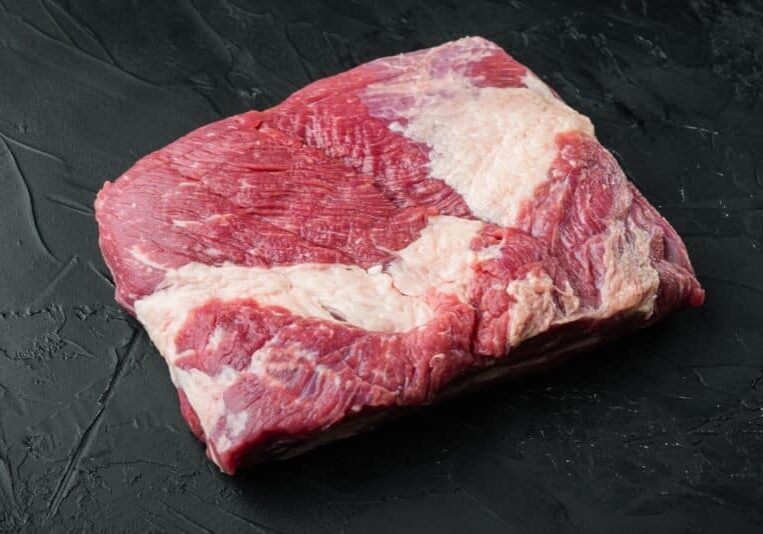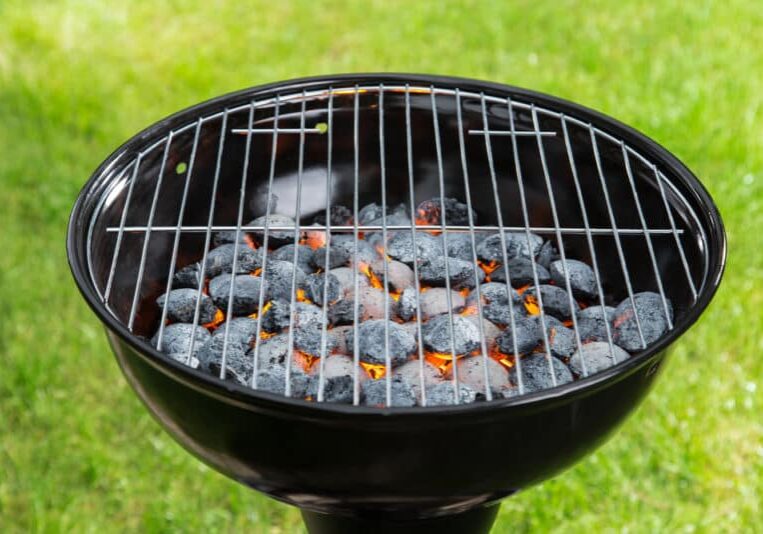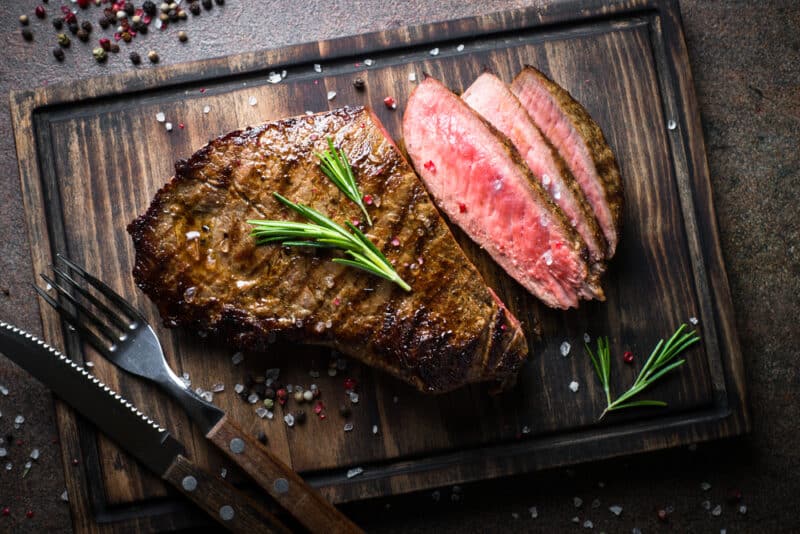Can You Use Charcoal in a Pellet Grill? Exploring Cooking Options
TheGrillingMaster.com is reader-supported. If you buy something using the links on our site, we might earn an affiliate commission at no added cost to you. This helps us pay our staff to keep making awesome content for you!

Have you ever caught yourself pondering the possibility of tossing some charcoal into your pellet grill? Trust me, you’re not the only one who’s been tempted by the thought. It’s common knowledge that pellet grills are tailor-made for those trusty wood pellets, but with a dash of creativity and careful consideration, integrating charcoal might just be within reach.
This post is about to dive deep into what you should and shouldn’t do to potentially add a little extra pizzazz to your grilling game. So don’t go anywhere – this could take your future barbecues to a whole new level!
Key Takeaways
- Charcoal can enhance the flavor of food with a smoky taste and allow for higher heat searing in a pellet grill, adding depth to grilled dishes.
- When using charcoal in a pellet grill, it’s vital to use high – quality charcoal pellets, manage airflow carefully, and clean the grill after each use to prevent damage.
- Mixing wood and charcoal pellets offers versatility in cooking by combining steady heat from wood pellets with rich flavors from charcoal.
- Wood pellets provide precise temperature control and consistent smoke for slow cooking while charcoal burns hotter for searing meats quickly.
- Always consider potential risks like damaging the auger system or creating excessive smoke when using charcoal in your pellet grill.
The Basics of Charcoal Grilling
Charcoal grilling offers a distinct flavor and aroma to your food due to the natural wood composition of lump charcoal. It also provides high heat for searing meats, but it can be challenging to control the temperature compared to pellet grills.
Benefits and drawbacks
Exploring different cooking options leads me to the charcoal grilling method. Let’s dive into the benefits and drawbacks of using charcoal in your outdoor cookouts.
- Charcoal brings out a distinct smoky flavor that enhances the taste of grilled foods. The smoke infuses meats and veggies with a classic barbecue profile that’s hard to replicate.
- Heat levels soar when I use lump charcoal or briquettes, allowing for an excellent sear on steaks and burgers. This high heat is perfect for creating those coveted grill marks.
- I’ve noticed that using charcoal offers a sense of traditional grilling. It feels more hands-on and connects me with the age-old art of cooking over an open flame.
- Adjusting temperatures can be done by managing the amount of charcoal and airflow, giving me control over how fast and how much my food cooks.
- Those moments when I’m looking to go low-and-slow, like when smoking brisket or ribs, lump charcoal maintains a consistent temperature for hours.
- Starting a charcoal grill takes more time than firing up a pellet smoker. I need patience as it heats up before I can start cooking.
- Maintenance during cooking is necessary; I have to keep an eye on fuel levels and manage vents for temperature control, which means more hands-on attention compared to automated pellet systems.
- Cleaning up after my cookout involves disposing of ashes properly; it’s messier compared to other modern grilling options where ash management is built in.
- Charcoal grills expose foods directly to flames, which increases the risk of flare – ups and potentially burning my precious steaks if left unattended even for a minute.
- Controlling temperatures can be tricky; sometimes it feels like I need to be a fire whisperer not just good at grilling techniques, especially when dealing with different types of charcoal products.
How it differs from pellet grilling
Charcoal grilling differs from pellet grilling in the fuel source used for cooking. Charcoal grills rely on charcoal briquettes or lump charcoal, which burn at a higher temperature and create a distinct smoky flavor.
In contrast, pellet grills use wood pellets as a fuel source, offering precise temperature control and consistent smoke production for slow-cooking meats. Additionally, while charcoal grilling allows for direct heat searing and faster cooking times, pellet grills excel in their ability to infuse food with complex wood flavors without the need for constant monitoring.
Moreover, the distinctive taste imparted by charcoal grilling is often preferred by barbecue enthusiasts seeking authentic smokiness and charred flavor profiles in their dishes. On the other hand, pellet grills are prized for their convenience and versatility, making them well-suited for smoking, roasting, baking, and even braising various foods with ease.
Using Charcoal in a Pellet Grill
When considering using charcoal in a pellet grill, there are certain risks and considerations to keep in mind. However, with the right tips and techniques, it is possible to successfully utilize charcoal in a pellet grill for a unique cooking experience.
Risks and considerations
Using charcoal in a pellet grill poses some potential risks and considerations. One major concern is the risk of damaging the grill’s auger system due to the higher ash content of charcoal compared to wood pellets.
Additionally, if not used properly, charcoal can create excessive smoke and lead to temperature control issues within the pellet grill.
Careful consideration should also be given to airflow adjustments when using charcoal in a pellet grill, as improper adjustments may result in erratic temperatures or even flare-ups.
Tips for successful use
When considering using charcoal in a pellet grill, it’s essential to keep these tips in mind for successful grilling:
- Start with high – quality charcoal pellets that are specifically designed for grilling in a pellet grill. Look for options made from natural hardwood with minimal fillers for optimal flavor and performance.
- Use a charcoal grate or basket to contain the charcoal pellets within the grill, ensuring even distribution of heat and efficient combustion.
- Preheat the grill thoroughly before adding food to ensure that the charcoal has ignited completely and reached the desired cooking temperature.
- Monitor and regulate airflow carefully to control the intensity of the heat and prevent flare – ups, especially when searing at high temperatures.
- Consider supplementing with wood pellets to introduce additional smoky flavors, as well as provide steady heat and clean combustion.
- Clean the grill thoroughly after each use to remove ash buildup and maintain optimal performance for future grilling sessions.
- Experiment with different types of charcoal pellets and wood pellet blends to discover unique flavor profiles that complement various foods.
Alternative Fuel Options for Pellet Grills
When it comes to fuel options for pellet grills, there are various choices to consider. From wood pellets to charcoal pellets, each option offers its own unique benefits and flavor profiles.
Mixing different types of fuel can also provide a customized cooking experience.
Wood pellets vs charcoal pellets
As a seasoned griller, I’ve experimented with different types of fuel to achieve the perfect cook. Let’s delve into the distinctions between wood pellets and charcoal pellets, which are two viable options for those using pellet grills.
| Wood Pellets | Charcoal Pellets |
|---|---|
| Made from compressed sawdust or wood shavings | Consist of a blend of charcoal powder and wood fibers |
| Provide a clean burn with less ash production | Generate more ash than wood pellets |
| Offer a variety of wood flavors such as hickory or mesquite | Typically impart a stronger, smokier flavor akin to traditional charcoal |
| Burn at a consistent temperature for even cooking | May provide higher heat for better searing |
| Environmentally friendly due to the use of natural materials | Can be less eco-friendly due to the charcoal component |
| Perfect for low and slow cooking methods | Suit quick grilling that requires high heat |
| Less likely to cause flare-ups | Flare-ups can be more common due to the charcoal content |
Mixing these fuel types can add complexity to your grilling experience, offering both the steady heat of wood pellets and the rich taste of charcoal.
Mixing charcoal and wood pellets
When considering mixing charcoal and wood pellets in a pellet grill, it’s essential to recognize the unique flavor profile and added depth that this combination can bring to your grilled dishes.
By blending these fuels, you can achieve a perfect fusion of smokiness from the wood pellets and the intense heat from the charcoal. This harmonious blend enables you to customize your cooking experience, allowing for versatility in flavors while maintaining steady heat levels for consistent grilling.
Furthermore, mixing these two types of fuel offers additional control over temperature management and allows for personalized adjustments based on specific recipes or desired flavor profiles.
Benefits of Using Charcoal in a Pellet Grill
– Enhanced flavor profile and higher heat-searing capability make using charcoal in a pellet grill an exciting option for cooking enthusiasts. The versatility and control it offers, along with reduced ash and clean-up, as well as the ability to supplement with unique flavors, provide a wide range of benefits for those considering this cooking method.
Enhanced flavor profile
Using charcoal in a pellet grill can enhance the flavor profile of your food. The high heat produced by charcoal creates a delicious sear and smoky taste that adds depth and complexity to your dishes.
This bold flavor is especially appealing when cooking meats, imparting a rich and savory essence that elevates the overall dining experience.
Incorporating charcoal into your pellet grill allows you to infuse your food with intense, earthy flavors, providing a unique culinary experience that sets it apart from traditional grilling methods.
Higher heat and searing capability
I have experienced that using charcoal in a pellet grill provides the ability to achieve higher temperatures for perfect searing. This is due to the intense heat produced by charcoal, allowing you to create those beautiful sear marks on your steaks and burgers while still maintaining that smoky flavor.
Furthermore, the higher heat capabilities of charcoal in a pellet grill enable you to quickly cook or finish off dishes, adding versatility to your grilling options. By utilizing this method, I’ve been able to achieve an impressive caramelized crust on my meats while infusing them with rich charred flavors.
The enhanced heat from charcoal opens up new possibilities for creating mouthwatering grilled masterpieces.
Versatility and control
To complement the higher heat and searing capabilities of charcoal in a pellet grill, the versatility and control it offers are unmatched. The ability to adjust the amount of charcoal used allows for precise temperature management, giving cooks more control over their grilling experience.
It also enables them to experiment with different cooking techniques, such as direct or indirect heat methods, adding a new dimension to their culinary creations. This level of versatility empowers grillers to customize their cooking style based on their preferences and the specific demands of each dish they prepare, offering endless possibilities for creating exceptional flavors.
The diverse selection of charcoal types available further enhances the versatility of using charcoal in a pellet grill, allowing for unique smoky profiles and distinct flavor infusion into various foods.
Reduced ash and clean-up
Using charcoal in a pellet grill results in reduced ash compared to traditional charcoal grilling. This means less mess and easier clean-up after cooking, making it a convenient option for those who value simplicity and efficiency.
With minimal ash production, the focus can be on enjoying the flavors produced by the combination of charcoal and wood pellets.
Additionally, there is less likelihood of flare-ups or excessive smoke due to the controlled combustion process when using charcoal pellets in a pellet grill. This creates a more enjoyable cooking experience with fewer interruptions and less maintenance required during grilling sessions.
Ability to supplement with unique flavors
Supplementing with unique flavors in a pellet grill is an exciting aspect of using charcoal. By adding different types of wood or charcoal pellets, I can achieve distinct smoky and savory tastes in my grilled foods.
This versatility allows me to experiment with various flavor profiles, from hickory and mesquite to applewood and cherry, enhancing the aroma and taste of my barbecue dishes.
Injecting unique flavors into the cooking process contributes to a dynamic culinary experience that keeps mealtime interesting for grill enthusiasts like me. The ability to tailor the flavor profile based on personal preferences and dish requirements adds depth and character to the food, turning each grilling session into a creative exploration of tantalizing tastes.
Making an Informed Decision on Fuel Choice
When choosing fuel for your pellet grill, it’s essential to consider the flavor profile you want to achieve. Different woods and charcoal pellets impart distinct flavors – hickory for a strong smoky taste or cherry for a sweeter profile.
Assess the heat level needed; high-temperature searing requires charcoal while wood pellets are ideal for slow smoking. Determine if you prefer precise control over temperature settings, as wood pellets offer more regulated heat output compared to traditional charcoal.
Evaluate the convenience factor when deciding on fuel choice. Charcoal may require more frequent monitoring and maintenance during grilling sessions, whereas wood pellets can provide a consistent burn rate with minimal intervention.
Consider cost efficiency and environmental impact; while both options have their pros and cons, it’s essential to balance practicality with personal preferences when making an informed decision on fuel choice for your pellet grill.

Conclusion
In conclusion, exploring the option of using charcoal in a pellet grill provides an exciting opportunity for enhancing flavor and expanding cooking capabilities. By understanding the risks, benefits, and tips for successful use, individuals can make an informed decision on their fuel choice.
Whether opting for traditional wood pellets or considering the addition of charcoal pellets for higher heat and searing potential, experimenting with different fuel options opens up new possibilities in barbecue cooking.
Making the most of versatile grilling equipment choices and accessories allows for creative exploration to achieve optimal results in smoking and grilling.
FAQs
1. Can charcoal be used in a pellet grill?
Charcoal should not be used in a pellet grill because they are designed specifically for cooking with pellets as the fuel source.
2. How do pellet grills compare to charcoal grills?
Pellet grills offer more temperature control and are easier to use than charcoal grills, which provide a traditional smoky flavor but require more effort to manage heat.
3. What options do I have for smoking on my grill?
You can use smoking wood chips in both pellet and charcoal grills to add that smoked flavor to your barbecue cooking.
4. Where can I find reviews for the best type of grill for me?
Grill reviews are available online where you can compare different types of grilling equipment choices, including accessories and fuel options like pellets or charcoal.
Learn More About Grilling
If you want to learn more about grilling, check out these other helpful resources!

Patrick Harvey
Patrick is a life long grilling enthusiast with an eye for product development and user experience. His expertise helps us test and review all of the products you see the website.
About The Grilling Master
Hi there, I'm Kevin Turner, Founder and CEO of thegrillingmaster.com.
My passion has always been grilling, smoking and BBQ delicious meats that satisfy my inner carnivore!
I started this website to share my passion and knowledge with you, the hungry reader who wants to prepare the perfect meal.
You can leverage my years of experience as a pit master and professional.
Send me a message and let's connect on Twitter here.

















